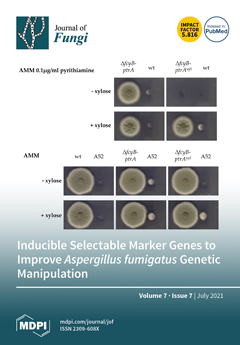Candida species represent a common cause of bloodstream infection (BSI). Given the emergence of non-albicans
Candida (NAC) associated with treatment failure, investigations into the species distribution, fungal susceptibility profile, and molecular epidemiology of pathogens are necessary to optimize the treatment of candidemia and
[...] Read more.
Candida species represent a common cause of bloodstream infection (BSI). Given the emergence of non-albicans
Candida (NAC) associated with treatment failure, investigations into the species distribution, fungal susceptibility profile, and molecular epidemiology of pathogens are necessary to optimize the treatment of candidemia and explore the transmission of drug resistance for control management. This study evaluated the prevalence, antifungal susceptibility, and molecular characteristics of
Candida species causing BSI in a tertiary-level hospital in Bangkok, Thailand. In total, 54
Candida isolates were recovered from 49 patients with candidemia.
C. tropicalis was the most prevalent species (33.3%), followed by
C. albicans (29.6%). Most
Candida species were susceptible to various antifungal agents, excluding
C. glabrata and
C. tropicalis, which had increased rates of non-susceptibility to azoles. Most
C. glabrata isolates were non-susceptible to echinocandins, especially caspofungin. The population structure of
C. albicans was highly diverse, with clade 17 predominance. GoeBURST analysis of
C. tropicalis revealed associations between genotype and fluconazole resistance in a particular clonal complex. The population structure of
C. glabrata appeared to have a low level of genetic diversity in MLST loci. Collectively, these data might provide a fundamental database contributing to the development of novel antifungal agents and diagnostic tests.
Full article






